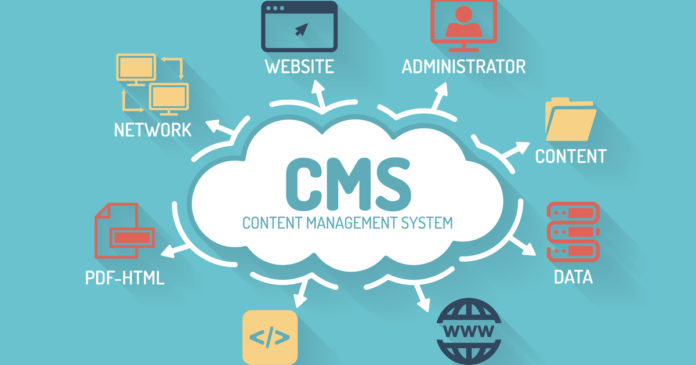Best content management software will be discussed in this article. Every marketer is aware that a website’s success depends on its ability to draw and keep a large number of visitors. To do this, though, one must regularly update it with interesting content to keep visitors interested.
Without the capable support of content management software or CMS, this really difficult task will be impossible. However, a CMS does more than just make sure your content is eye-catching and current.
This dependable and potent kind of software also aids in the positive search results, security, device optimization, etc. of your website. This is why we’ve compiled a list of the top 15 content management systems, so you can determine whether you’re already utilising a strong CMS or whether you need to switch to a better one.
The COVID-19 epidemic has caused problems for a number of businesses, but the market for content management software has managed to weather the storm. In the United States alone, the market for CMS software is anticipated to reach $11 billion in 2020.
The market for CMS software is estimated to be valued $40.8 billion globally and to grow to $112 billion by 2027. By 2027, it is anticipated that the CMS on-premises market would have grown by 14.8% compound yearly growth rate, or $59 billion.
Here is our list of the top CMS available today as determined by our SaaS specialists. This decision was made more from the perspective of small enterprises, marketing, and other relevant data, such as statistics on digital marketing.
Top 15 Best Content Management Software in 2022
Top 15 Best Content Management Software are explained here.
1. HubSpot
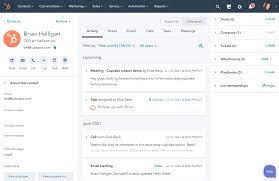
HubSpot is a marketing toolkit that gives marketers the tools they need to produce interesting content and distribute it to their target audience without delay.
Additionally, the software assists businesses in growing their contact database, integrating email analytics directly into the solution without combining and exporting data, and segmenting emails for improved personalisation and delivery. This post will explain content management software.
Full-funnel marketing software is available with this reliable solution, enabling customers to design and distribute efficient emails that are integrated with the rest of their marketing tools and applications.
Users can also establish static and intelligent email lists that are automatically updated based on changes in the contact field data or list membership.
Additionally, you don’t need to be an IT specialist to use the system’s features to design and deliver efficient, customised emails.
Alternately, you can select one of the templates the software provides.
Additionally, you may assess the effectiveness of your email campaigns using the integrated analytics.
Key Features of HubSpot
Search engine optimization, A/B testing dock pages, blog analytics, integrated social publishing, event-based automation triggers, and search engine optimization
2. monday.com
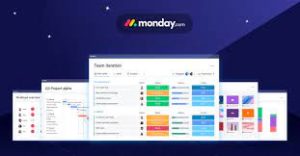
A renowned content, collaboration, and marketing suite is Monday.com. By employing a central hub that is easily accessible, it helps firms organise their content and communication. Additionally, this approach streamlines team contributions, making content creation simple.
Additionally, content and progress statistics are gathered and presented in a style that is simple to grasp when used by marketing teams. Due to its powerful collaboration features, marketers can fulfil their duties more effectively and quickly.
Overall, it serves to simplify marketing operations by centralising your team’s people, tools, and content.
Key Features of Monday.com
- A tool for many-to-many communication
Knowledgebase
- Personal and public boards
- Reporting and analytics
- Team collaboration
3. WordPress

WordPress is a consistent front-runner in this software market thanks in large part to its exceptional functionality, potent features, and outstanding customer support.
For the requirements of both small and large businesses, the vendor offers acceptable pricing options.
Initially just a simple blogging software, this website builder has evolved into a fully featured CMS by utilising tens of thousands of themes, widgets, and plugins.
All you need to sign up for WordPress is an email address, to which the vendor will provide you a WordPress.com address.
You can easily create your blog or website by downloading and installing the software script while using this CMS.
Then, in order to host your new blog for free, you must put your website on a web server that lets you utilise the WordPress.com service.
Core WordPress Features: Search engine-optimized websites, a variety of publishing tools, ease of website publishing, and full standards compliance
4. Drupal
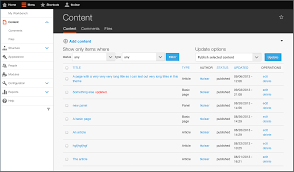
The term “community publishing system” is used to describe Drupal. Essentially, Drupal is a content management system (CMS) that has been enhanced for social media use on the internet.
It is a system that integrates key components from CMS, blogging and e-commerce platforms, wikis, and forums to produce a modular integrated solution that can be used for e-commerce, publication, and communication. Also check Torrent2DDL Alternatives
This is an open-source CMS that powers several websites and programmes without cost.
A wide variety of user communities actively contribute to, support, and develop the software. This post will explain content management software.
Advanced menu management and user management are capabilities that Drupal offers.
These functionalities can also be used by users to build straightforward yet sophisticated websites, social networking pages, etc.
It works great as blog software as well.
Drupal’s Core Features: Page content management; an open-source alternative; a wide variety of displays, themes, and modules; and a powerful taxonomy feature
5. Acquia

One of the top content management system options in our ranking is Acquia. This CMS platform was created with community, commerce, and content in mind.
This solution offers a cloud based platform where you can design and optimise your clients’ digital experiences, and it is also a well-liked content marketing software.
Businesses utilise Acquia to build solid digital foundations for offering top-notch consumer experiences. Instead of SaaS, the company provides Platform as a Service (PaaS).
In a nutshell, Acquia is a for-profit open-source software that provides stunning content experiences.
In the meanwhile, merchandisers and marketers can manage the delivery of a customised experience using the software.
Developers and technical executives can utilise the system to quickly construct complex applications while ensuring dependability and security.
The technology enables content managers and businesses to create a consistent brand, commerce, and social experience across different devices and regions.
The core capabilities of Acquia include simple media integration, site visitor analytics, marketing integration, and content as a service.
6. Squarespace
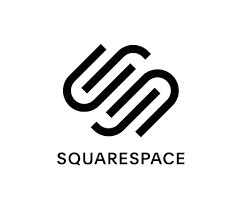
For people and small companies who want to sell online, Squarespace is the best platform. The system can be used to launch personal websites and blogs as well as online stores.
Through its dynamic style editor, this cloud-based system provides comprehensive and powerful customization tools. Additionally, Squarespace provides attractive pre-made templates to make the process of creating websites simple.
The elegant and lovely designer templates are simple yet sophisticated, with lots of images. They instantly grab people’s attention, which might help your internet business.
Similar to that, the layouts are fluid and intuitive, allowing you to enjoy improved viewing, particularly on mobile devices.
The software also stands out for offering a wide range of customization and style choices. Additionally, members receive free Typekit fonts and cheap Getty photos.
The main attributes of Squarespace are: a simple DIY website builder; mobile websites built in; a personalised WYSIWYG editor; and automatic picture scaling.
7. Joomla!
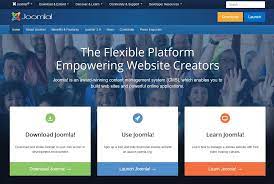
A well-liked and extensively used open-source CMS is Joomla! The software allows you to monitor and manage the quality of all the different kinds of content that are posted on your website.
It is comparable to a library that holds and manages its collection of books. Even for beginners, the software is easy to use because to the interface. In essence, Joomla! allows you to generate and manage content, including text, audio, video, photos, and more. To use the software, you don’t need any technical expertise or understanding of content management.
Because you can manage and organise all of your content with a single click. This platform is also used to support websites of all sizes and types.
Experts concur that Drupal is more difficult than basic WordPress and that Joomla! is in the middle.
The fundamental capabilities of Joomla! are: managing a CMS; arranging articles; managing media; and overriding templates.
8. Sitecore

Customer experience management is integrated into the CMS Sitecore.
You can manage the general user experience across all of your apps and websites thanks to the software.
It provides tools that let you assess how consumers are generally interacting with your content.
The system’s ability to manage any content and provide you complete control over the consumer experience is its strongest feature.
The provider feels that consistent digital experiences depend on website management software.
And for this reason, the platform was created to provide each user with a special web experience. This is another content management software.
Sitecore is supported by a powerful web CMS and is connected to online content strategies and experiences across all types of devices.
Additionally, the software assists you in developing engaging web experiences and shows the content in the best layout possible for user devices.
Web experience management, A/B testing, cross channel data analytics, and predictive marketing are among the primary features of Sitecore.
9. Box

A secure file-sharing and content management platform called Box enables remote collaboration from any device. Also check 0Gomovies alternatives
The technology makes it simple to organise and distribute files within your business.
More than 50,000 businesses utilise the software worldwide, including well-known names like Pandora, GE, Boston Scientific, Gap, and Nationwide.
Additionally, you can effortlessly create, modify, and review files with other users while on the go or in real-time with this file-sharing tool. This post will explain content management software.
Granular permissions, mobile security, customer managed encryption, & activity logs are just a few of the security features the provider offers for stored files.
Users can also abide by regulatory standards, e-discovery requirements, and data retention policies.
Box also assists your organisation in adhering to local as well as international business and regulatory regulations.
Box’s Core Features Full-text search, granular permissions, Box content API, and rich file preview
10. Brightcove
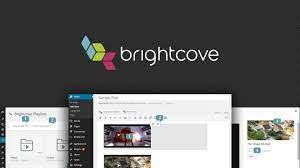
Companies can utilise a variety of online video solutions and systems from Brightcove to distribute engaging video content and make money off of it on various platforms and devices. Two categories—Media and Brands—are used to categorise internet video solutions. This is another content management software.
The software on this platform can also be used by content owners, distributors, publishers, and broadcasters to swiftly and efficiently engage and monetize their audiences.
Brightcove for brands addresses the marketing potential of online videos and aids in providing engaging content across the whole customer experience.
Social sharing, HTML5 video, ingestion and transcoding, and video library management are among the core features of Brightcove.
11. Pantheon.io

A website management software for Drupal and WordPress is called Pantheon.io. Although the software is a relatively recent discovery for WordPress management, it has long been available for Drupal, concentrating on both businesses and developers. This post will explain content management software.
These resources have been moved to the WordPress ecosystem, resulting in the development of a top-tier managed WordPress hosting provider.
Additionally, users can move around with the hosting components and details because this platform can manage WordPress and Drupal.
Additionally, it enables management, updating, and deployment of modifications on WordPress and Drupal websites.
Smooth scaling, container-based platforms, cloud development environments, and automated site monitoring
12. Contentful
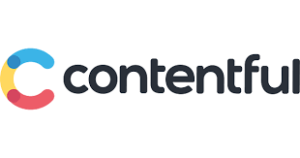
Online content management and development platform Contentful has an embedded API. Through the use of APIs, this advanced system makes all created content available, enabling users to show their content wherever and however they see fit.
Additionally, users can use Contentful to build a unique content model rather than working with pre-made templates. This is another content management software.
The platform also provides all necessary content while giving customers enough flexibility to create around it, thereby separating the content from the presentation in a scalable and adaptable way.
Overall, Contentful is a cost-effective, tightly integrated CMS that can easily fit into the software architecture of your business.
The vendor provides a free plan for beginners, and you can quickly upgrade to more expensive, paid packages to support the growth of your business.
The core capabilities of Contentful include the ability to generate various types of content templates, a multi-platform markup language, modular and flexible fields, and extensive query filters.
13. Kentico

The only CMS platform with complete integration for e-commerce, ASP.NET, and other important online marketing tools is Kentico.
By doing so, users are able to design complex websites and completely optimise the experiences of their digital customers across various channels.
Businesses of all sizes can help from the comprehensive digital marketing tools offered by this CMS solution, which includes an SEO tool. This post will explain content management software. Also check Parrot OS alternatives
With these characteristics, users can use the software to make appealing websites, online shops, etc. that serve to enhance team communication as well as client communication.
The provider, however, has four pricing tiers with yearly subscriptions. The features and user count included by your company affect pricing.
Additionally, all plans have seamless integration with a variety of external platforms, apps, and systems. This is another content management software.
The main features of Kentico are: document management, multilingual content, SEO, email marketing, and social media marketing.
14. Unicheck

Unicheck is a plagiarism-detection application that can be used for both personal and professional purposes. It makes use of cutting-edge technologies to quickly and reliably find plagiarism.
To check for plagiarism, all you need to do is enter a sentence or run the entire document, and the software will instantly search the web, user databases, and open source libraries to look for content overlaps.
This solution can also examine cloud-based services like Google Drive and Dropbox and supports a wide range of document formats.
Users can also perform plagiarism checks while they are in motion.
In essence, Unicheck gives you the best access to check for content similarity and make sure that every piece of content you run is as legitimate as possible.
The core capabilities of Unicheck include: support for many document formats; strong algorithms; real-time searching across multiple libraries; and built-in analytics.
15. Superdesk

Newsmakers and journalists may centralise their processes for content development, production, and curation on a single platform thanks to Superdesk, which was primarily created for news agencies.
This headless open-source CMS is flexible, adaptable, and furnished with potent capabilities that can help news organisations achieve their stringent requirements and deadlines. This is another content management software. This post will explain content management software.
Document management, approval process control, version control, a text editor, and many other functions are included in Superdesk.
Additionally, because it is modular and open-source software with API-forward functionality, this solution can adapt to your evolving demands and integrate smoothly with your current operations.
Core Features of Superdesk
- Rich text editor
- Template generation
- Document and permission management
- Indexing
How to Choose the Right CMS for Your Website
You now know more about the top-rated, widely-used content management systems available on the market after reading our review of the top 15 tools.
The user base is only one of many factors to take into account while looking for the best CMS for your company website, though.
The following are some recommendations for selecting the ideal CMS for your company’s needs:
Make sure your CMS is scalable and avoid developing a CMS from scratch.
- Choose a CMS with an intuitive user interface that can enable omnichannel marketing and access.
- Properly visualise and arrange your website.
- Use a solution that won’t force you to rely too heavily on web developers at all costs.
- Choose a CMS vendor more for their support than for their software. Check to see whether they have significant support, integrations, and API.
- Before selecting one, make sure to test it and get a proof-of-concept.
- Don’t restrict your system to a single line of code.
And if you’re currently looking for a new CMS, it’s a good idea to try out a few different options first before making a decision.

